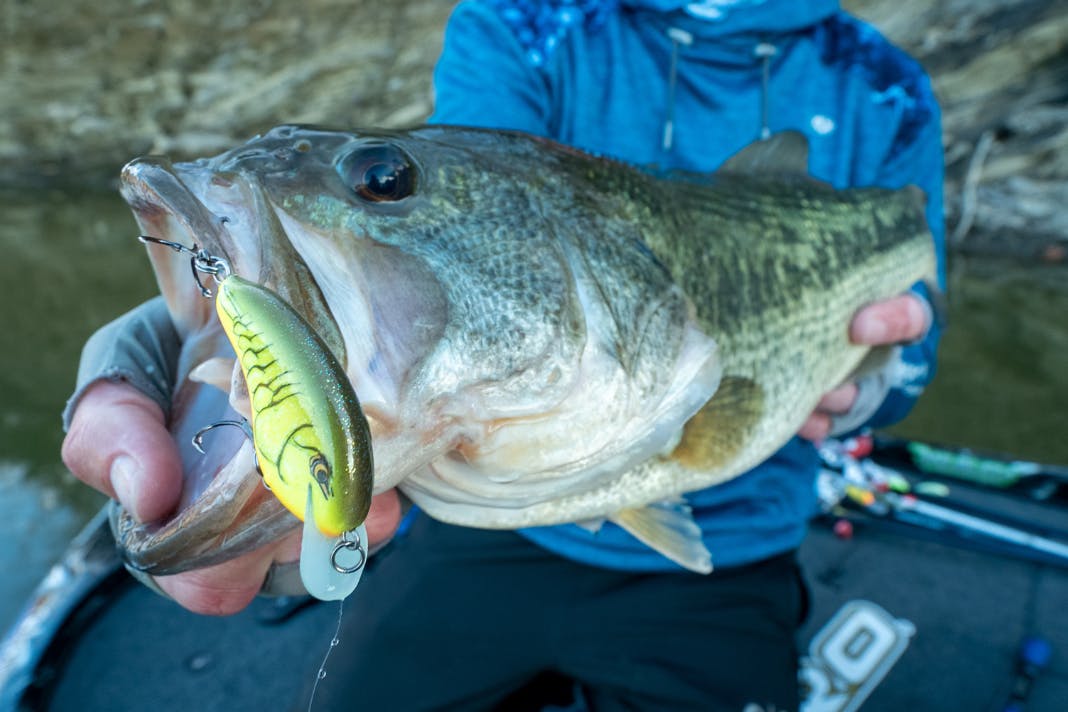
Crankbait Fishing Secrets With Ott DeFoe: Tips for Catching More Fish
There is a lot of mystery and uncertainty around crankbait fishing with the unlimited choices available to today's angler. Cut through the noise and gain confidence with the key concepts listed in this article, including input from pro Ott DeFoe.
One of the more important ones being about your hook choice. Most anglers leave the stock hooks on, but you may want to consider upgrading before your next fishing trip based on what is covered below!
What is a Crankbait
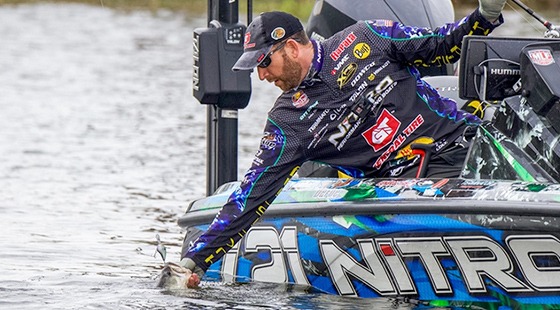
The term “Crankbait” can mean many different things and is an overarching term used to identify an entire category of fishing baits. To put it simply, a crankbait is any bait that contains a hard body and is intended to be casted and retrieved back with the reel.
Crankbaits are best used when covering lots of water or when the fish are in a chasing mood. Most are equipped with treble hooks that provide the catching power needed to fight a fish back to the boat.
They come in many shapes/sizes and can be used year round to catch fish. Various factors need to be considered to pick the optimal crankbait. Current weather conditions, water clarity, structure, and target species are few different scenarios an angler will encounter when selecting the perfect bait for the application.
For this article's purpose, we are talking about crankbaits that are designed with a main body and with an attached bill that causes the bait to dive deeper into the water when reeled in.
How to Fish a Crankbait
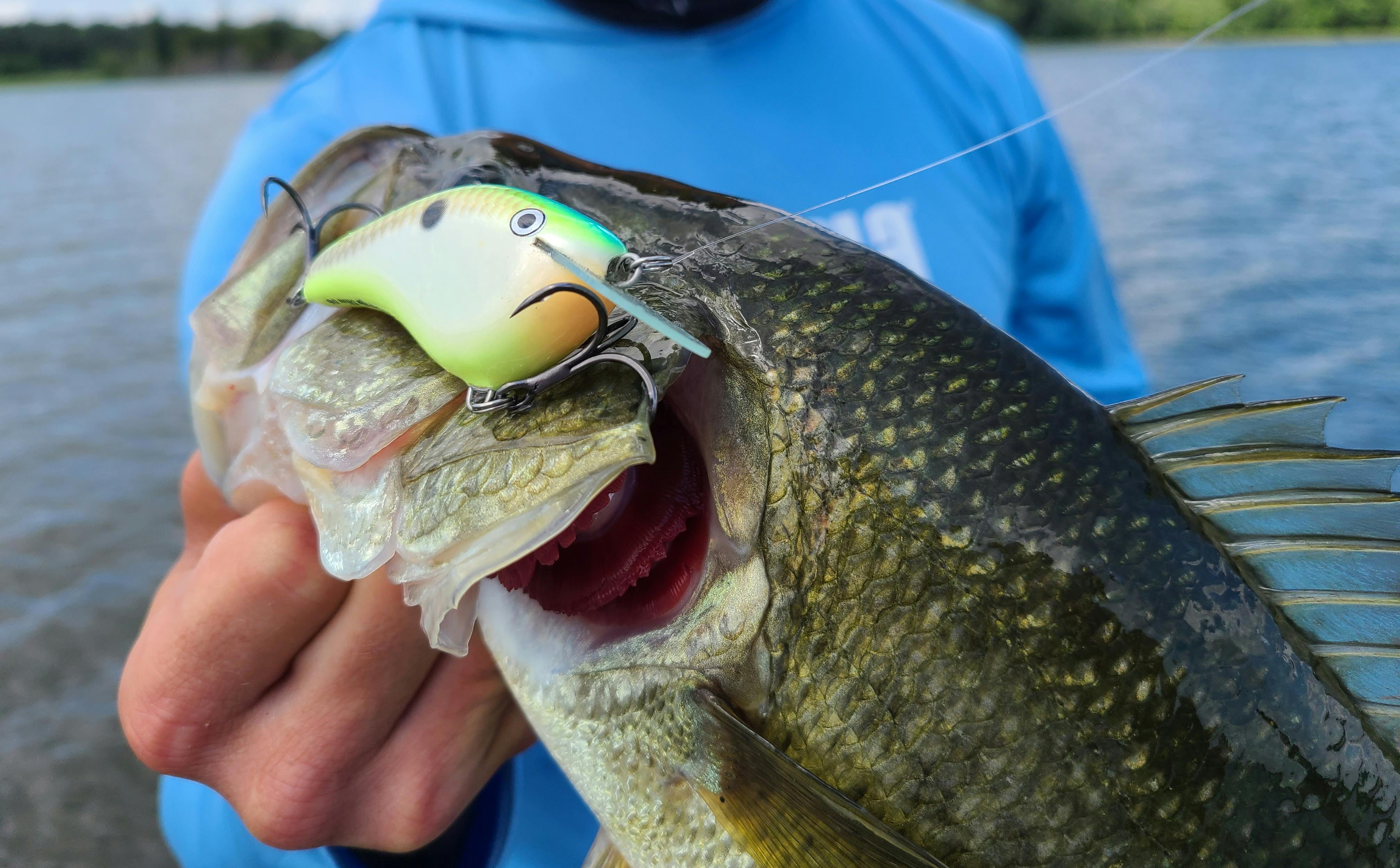
The first step in fishing a crankbait is making sure that you have a good option tied on! Things to think about when selecting a crankbait:
- Water Depth - For the most part, effectively fishing a crankbait means deflecting it off of stuff. A lot of times that is the bottom, so pick a crankbait that runs to a depth just greater than the bottom. This will cause the bait to keep contact and deflect off of structure, causing reaction strikes along the way.
- Structure Present - Objects like rocks, stumps, vegetations… all have an impact on how the baits work. Trying a few options around specific structures will give you a better understanding on how the baits deflect and dart.
- Water Clarity - The color of the water has an impact on what color you should be using. General rule of thumb is in clearer water, use baits that have more natural colors, prioritizing the colors that match the forage in the body of water you are fishing. In Murky water, gravitate toward colors that provide good contrast, making it easier for the fish to locate.
- Time of Year - This goes hand in hand with water temperature and the mood of the fish. Depending on the season and current conditions, fish can be more lethargic or more active. Lethargic fish are not as willing to bite and slower retrieves and tighter wobbles might be needed. Active or hunting fish will chase a bait moving faster or more aggressively.
After you have made your crankbait fishing choice, make a cast past your desired target or “sweet spot”. Depending on the depth of water you are fishing, it may take several cranks of the reel to get down to the desired depth.
During the retrieve back to the boat or shore, experiment with different speeds and cadences. Add some pauses if necessary. The key is trying to keep a good feel on what the bait is doing beneath the surface. It will give you clues on what the fish are more drawn to in the situation you are fishing.
Depending on how aggressive the fish are, you may or may not feel the bite. When the rod loads up, lean back and keep the pressure on. Rod and line tension are key to keep the hooks pinned in the fish's mouth.
Fishing Crankbaits in Cold Water
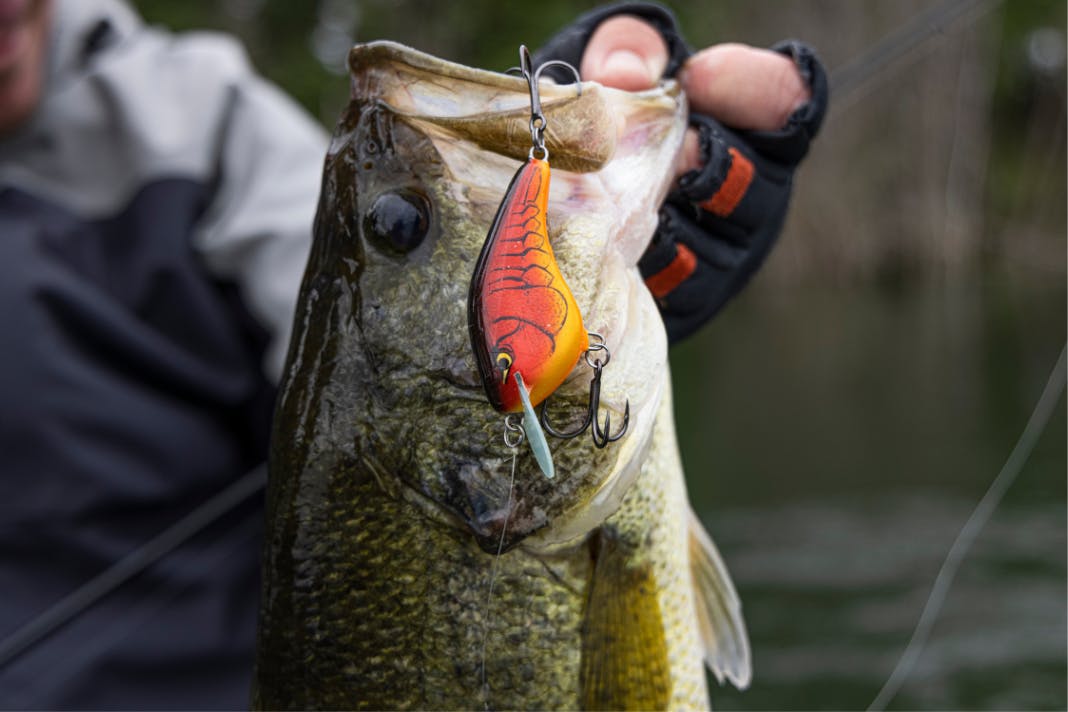
When fishing in cold water, it’s essential to adapt your crankbait and techniques to match the less active and more lethargic behavior of bass. Selecting the right cold water crankbait involves considering various factors, such as the action, diving depth, profile, color, and buoyancy of the lure.
Opt for a slow-moving or moderate action crankbait with a slower wobble or tight wiggling action, as fish are less likely to chase fast-moving lures in cold water. Subtleness is key in cold water, a little bit of action or speed goes a long way. If you think you are going slow, go slower!
Professional angler, Ott Defoe says "a slower retrieve with a lot of pauses is better in cold water." He also likes to keep contact with the bottom as lethargic fish are more likely to take a bait that lands right in front of them as the keep tight to structure.
Along the lines of having a subtle presentation, smaller profile crankbaits are also more appealing to fish in cold water. They not only push less water, but they often mimic the current forage size available.
Additionally, selecting natural or subtle colors, such as shad, crawfish, and bluegill patterns, can help better imitate the baitfish that fish are feeding on in cold water.
Suspending or slow-floating crankbaits are also worth considering, as they can stay in the strike zone longer, giving lethargic fish more time to decide whether to bite.
Finally, experiment with your retrieve by varying the speed and cadence to determine what works best in cold water conditions. Both slow, steady retrieves and stop-and-go retrieves can be effective at times. Be prepared to experiment with different types of crankbaits and retrieval techniques until you find what works best.
Rapala OG Slim for Cold Water Bass Fishing
The Rapala OG Slim Crankbait has several features that make it a good choice for cold water fishing:
- Subtle action: The Rapala OG Slim has a tight, subtle wobbling action that works well in cold water when fish are less aggressive and not keen on chasing fast-moving lures.
- Dive depth versatility: The OG Slim has a circuit board lip that allows it to dive at different depths, depending on the line used and the speed of the retrieve. This versatility makes it easier to target fish that move based on water temperature fluctuations.
- Natural color patterns: The Rapala OG Slim comes in a variety of natural and subtle color patterns, including shad, crawfish, and bluegill imitations. These colors can help mimic the baitfish that bass are feeding on in cold water.
- Size and profile: The OG Slim has a slender profile that resembles a variety of baitfish, making it a versatile option for cold water fishing. Its size can also imitate smaller baitfish, which are more common in colder conditions.
- Balsa wood construction: The Rapala OG Slim is made from balsa wood, which provides a unique, lively action that can be enticing to fish in cold water situations. The extra buoyancy helps get reaction strikes when deflecting it off of cover.
Fishing Crankbaits in Warm Water
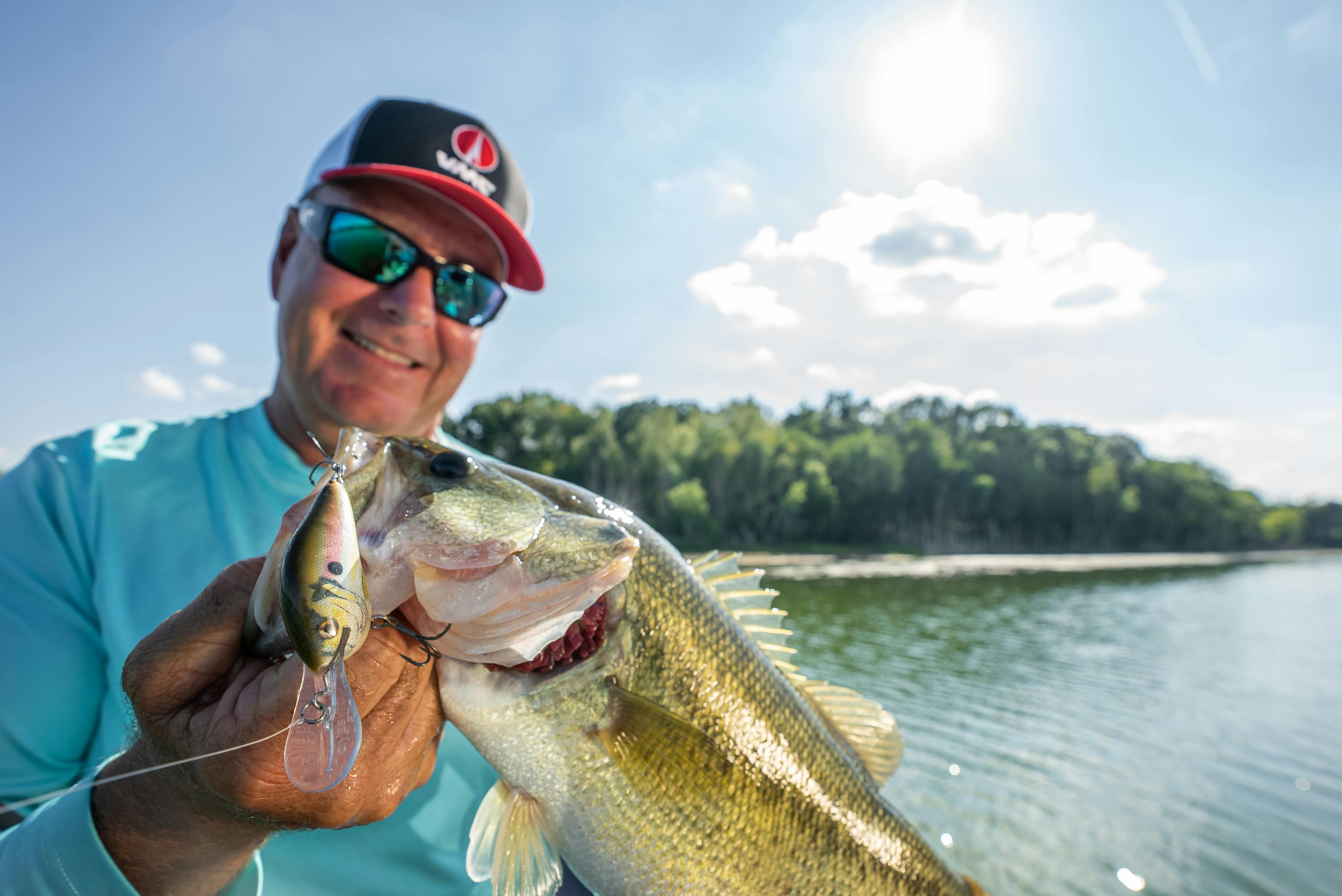
Crankbaits in warm water require a different approach to selection and retrieval, as fish are generally more active and willing to chase baits.
Many anglers select a fast-moving or aggressive action crankbait that features a wider wobble or erratic action. For example, squarebill crankbaits are known for their aggressive action and ability to deflect off cover.
Larger profile bites also work well because they push a bunch of water, which makes them easily detectable by hungry bass. Baitfish also see a growth spurt during the summer months and picking an appropriate size bait will help match the hatch to current conditions.
As with cold water fishing, warm water conditions can vary greatly. Be prepared to experiment with different types of crankbaits, colors, and retrieval techniques to find the most effective approach.
Rapala OG Rocco for Summertime Bass
Defoe loves using the Rocco for warm water conditions, when bass are more likely to chase a bait. "The Rocco has a wider deflection off of cover because of the square bill,"explains Defoe. "The more aggressive action and smaller profile make it a great warm water bait."
The Rocco crankbait can be fished during many parts of the year but truly shines when the water is warm and the fish are aggressive. It has several features that make it a great warm water bait:
- Aggressive action: The Rapala OG Rocco crankbait has a wider wobble and erratic action, making it a fast-moving and aggressive lure that is more likely to attract fish in warm water conditions.
- Shallow or medium-diving capabilities: The OG Rocco is designed to dive at shallow to medium depths, which is ideal for targeting fish that are living in the shallows during the summer months.
- Square circuit board lip: The Rapala OG Rocco crankbait features a square circuit board lip that helps the bait come through cover easier and remain in one piece with the added durability.
- Abundant colors: The OG Rocco comes in a variety of color patterns, ensuring an appropriate choice no matter where you are fishing.
- Versatile retrieve: The OG Rocco is suitable for a variety of retrieval speeds, allowing you to experiment with faster, more aggressive retrieves in warm water while also being adaptable to different conditions.
Best Treble Hooks for Crankbaits
A treble hook is the lifeline to bringing a fish to the boat. Although most trebles look the same, the performance of each couldn’t be more different. That’s why the VMC RedLine Finesse Treble is the perfect choice when it comes to upgrading hooks on your hard baits.
The Redline Finesse Treble Hooks are feature packed and come with every upgrade you would want in a high quality hook. Here are the features that make this hook stand out from the rest:
- Material strength: A good treble hook should be made of high-quality, durable material. RedLine hooks are made with Vanadium Steel, the same material used in Formula 1 race cars. This material provides a 25% increase in strength over its competitors.
- Sharpness: A sharp hook point is essential for effective hook penetration and secure hooksets. The Redline Finesse treble incorporates a compressed needle point design for extra stickiness and durability.
- Design and shape: A well-designed treble hook should be easy to use and keep fish pinned all the way to the boat. The RedLine Finesse Treble accomplishes that with its thin diameter wire and compact design. It avoids getting stuck together on long casts but has a wide enough gap between hook points to maximize your hookup ratio.
- Coating: The finish is important for the overall feel and look of the hook. The RedLine Finesse Treble has a P.T.F.E. coating that’s extremely smooth, which helps for easy hook penetration.
"Having a treble hook where the hook point doesn't round or bend is crucial" says Defoe , who utilizes VMC hooks on his OG series of crankbaits to catch fish across the country. If you aren't running your bait into structure you are missing fish. Having a hook that stands up to that kind of beating is a must!
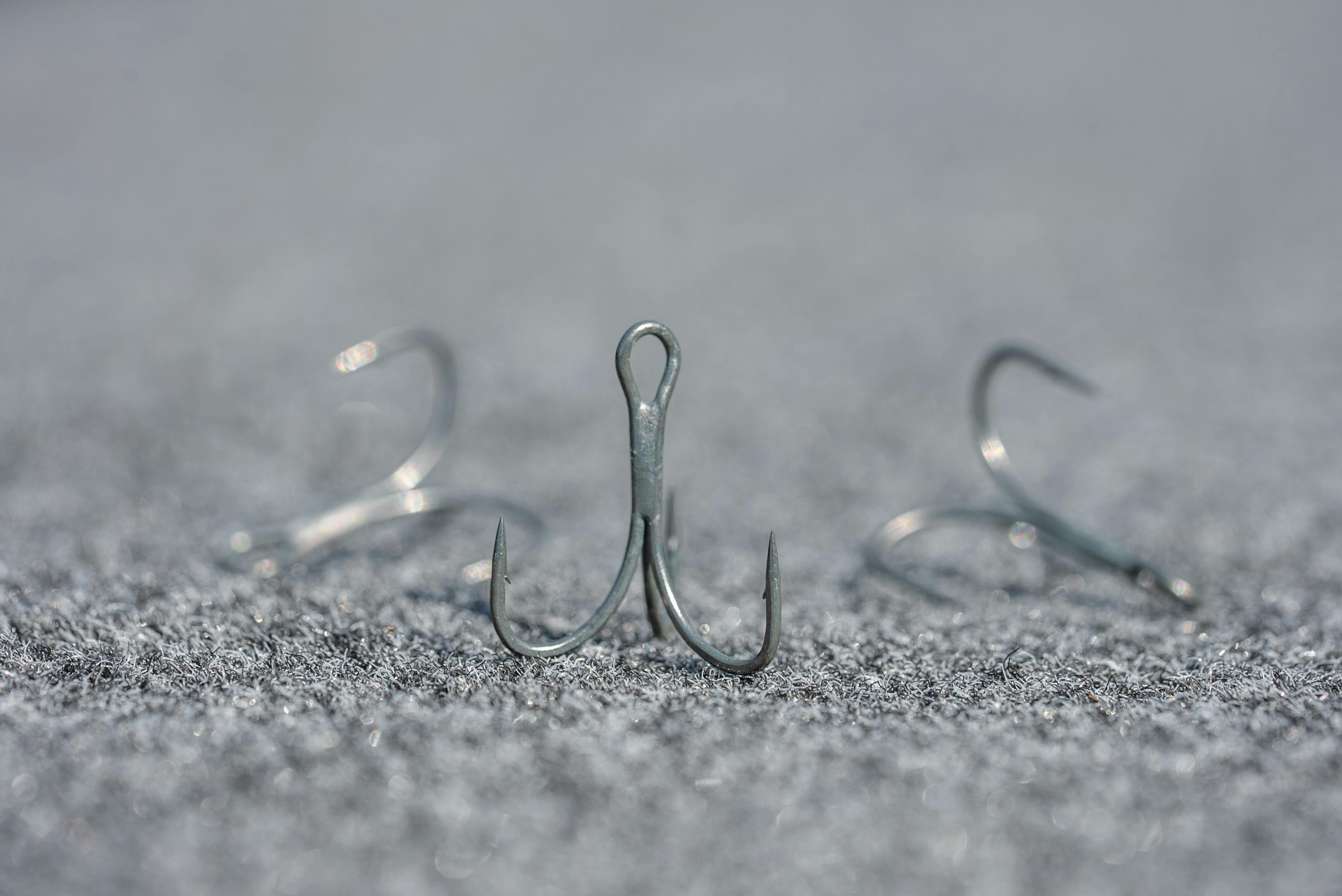
Regardless of the hard bait you are using, having a hook you can trust will increase your success on the water.
For more information on the entire series of VMC RedLine Hooks, check out the Rapala Blog for more information. We also have additional in-depth articles covering the VMC RedLine Neko Hooks and the VMC RedLine Hybrid Worm Hook.


